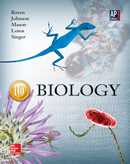1 A) The submucosa is a layer of muscle tissue. B) The submucosa is composed of connective tissue. C) The submucosa is the innermost tissue layer of the gut. D) The submucosa contains an epithelial lining. E) The submucosa is a layer of adipose tissue. F) No statement is correct 2 A) an omnivore. B) a carnivore. C) a herbivore. D) a ruminant. E) none of the above 3 A) to activate pepsinogen to become pepsin. B) to kill bacteria. C) to help denature food proteins. D) to provide the optimal pH for pepsin. E) all of the above 4 A) emulsify fats. B) no function - they are waste products from the liver. C) hydrolyze starch. D) complete the breakdown of proteins. E) none of the above. 5 A) is longer than the small intestine. B) has villi and microvilli. C) completes the digestive process. D) absorbs water, electrolytes and products of bacterial metabolism. E) all of the above 6 A) occurs in carnivores. B) occurs in nonruminant herbivores. C) occurs in ruminant herbivores. D) is the eating of feces. E) involves the digestion of wood products by symbiotic bacteria. 7 A) cholecystokinin, secretin, B) cholecystokinin (CCK), secretin, gastric inhibitory peptide (GIP) C) gastrin, secretin, D) cholecystokinin, secretin, gastrin E) chymotripsin, secretin, gastric inhibitory peptide 8 A) There is decreased insulin and glucagon production. B) There is increased glucagon production. C) Glycogen is hydrolyzed by the liver and glucose is released into the blood. D) There is increased insulin production. E) None of the above. 9 A) a mutant, non-functional form of leptin is present B) lack of leptin receptors in adipose cells C) reduced sensitivity to leptin in the brain D) reduced sensitivity to leptin in the duodenum E) none of the above 10 A) There is only one opening (i.e. no separate mouth and anus). B) Specialization of digestive functions is not possible. C) Only small food particles can be ingested. D) The size of the animal is limited. E) all of the above 11 A) chewing with their teeth. B) the secretion of digestive enzymes in the crop C) the grinding action of gritty objects or pebbles in the gizzard D) the grinding action of gritty objects or pebbles in the crop E) none of the above 12 A) the sphincter connecting the esophagus to the stomach B) rhythmic waves of muscular contractions in the esophagus C) a digestive enzyme secreted by the stomach D) a specialized stomach found in ruminants E) none of the above 13 A) emulsify fats B) provide a very large surface area for absorption C) make gut transport easier D) complete the break down of proteins. E) increase gut absorption time 14 A) true B) false 15 A) an enzyme B) a hormone that is secreted by cells in the stomach C) a hormone that is secreted by the pancreas D) a hormone that inhibits HCl secretion in the stomach E) both a hormone that is secreted by cells in the stomach and one that inhibits the secretion of HCl 16 A) Insulin secretion is increased while glucagon secretion is decreased. B) Insulin secretion is decreased while glucagon secretion is increased. C) Glycogenolysis is initiated by the liver. D) Gluconeogenesis is initiated by the liver. 17 A) true B) false 18 A) Skeletal muscle cells lack the membrane transport proteins with which to move the glucose from within their cytoplasm into blood vessels. B) Skeletal muscles store so little glycogen that there is never enough to move into blood. C) Before it becomes free glucose that can be moved into the blood, glycogen must be broken into monomers of glucose-6-phosphate, and each monomer must have a phosphate group removed. Skeletal muscles lack the enzyme for removal of the phosphate but can use the glucose-6-phosphate in glycolysis. D) The breakdown product of glycogen is glucose-6-phosphate which is the product of the first reaction in glycolysis. 19 A) They are first converted to fat and the remaining calories are converted to glycogen. B) They are converted to muscle protein first and then converted to fat. C) They are all converted to glycogen which is stored in vesicles within fat cells. D) They are first converted to glycogen and the remaining calories are converted to fat. 20 A) true B) false 21 A) By the lower brain B) By the pancreas C) By the hypothalamus D) By the liver





